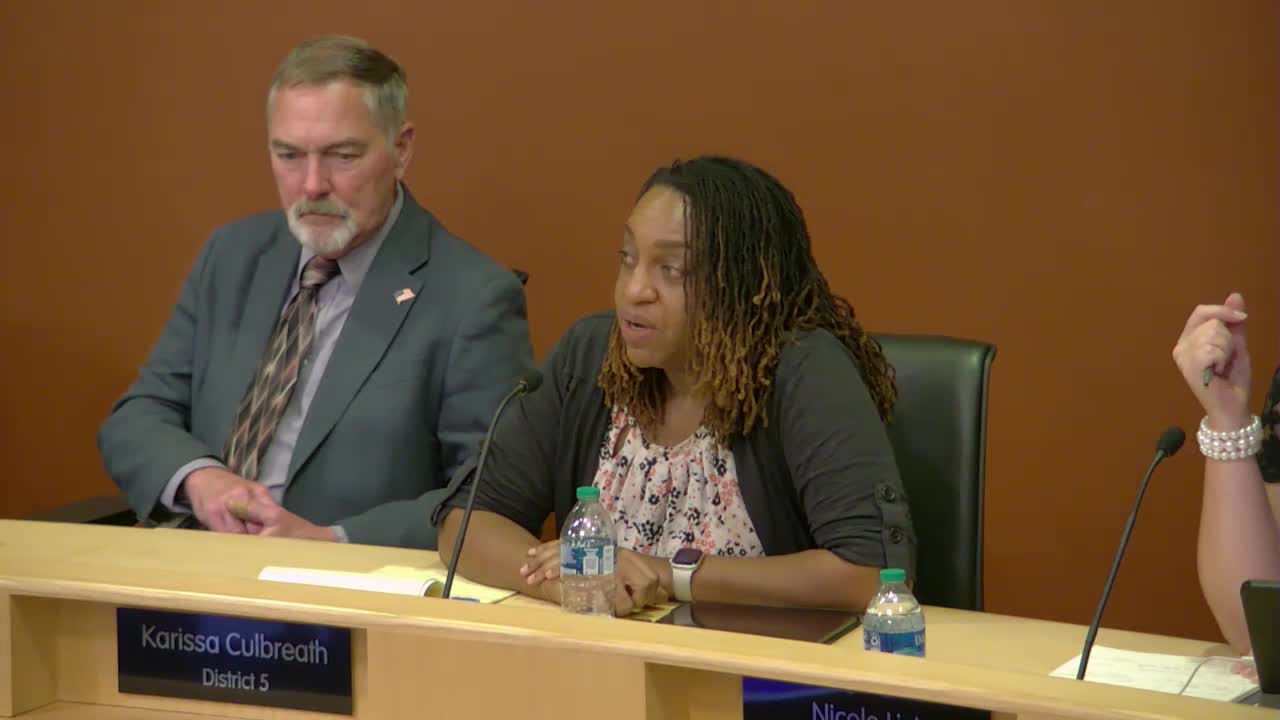City Council debates controversial short term rental regulations
September 26, 2024 | Rio Rancho, Sandoval County, New Mexico
This article was created by AI summarizing key points discussed. AI makes mistakes, so for full details and context, please refer to the video of the full meeting. Please report any errors so we can fix them. Report an error »

In a recent government meeting, the Rio Rancho City Council engaged in a heated discussion regarding the regulation of short-term rentals, reflecting a growing concern among residents about the impact of these rentals on neighborhood dynamics and community safety.
Council members expressed apprehension about the frequency of visitors associated with short-term rentals, with one councilor highlighting that a single rental could lead to as many as 32 visits per month, including cleaners and property managers. This influx of unknown individuals raised alarms about potential disturbances and safety issues for neighboring households. A citizen survey indicated that 41% of residents oppose short-term rentals altogether, prompting the council to seek a balanced approach to regulation.
The council debated an amendment that would limit short-term rentals to two rentals per week, but this proposal ultimately failed. Discussions also touched on the need for stricter regulations akin to those governing home occupations, which impose limits on customer numbers and operational hours.
Concerns were voiced about the lack of background checks for short-term rental guests, with one councilor, a former narcotics agent, sharing experiences of illegal activities associated with some rentals. He emphasized the importance of maintaining a safe and stable community environment, noting that many residents choose to live in Rio Rancho for its family-friendly atmosphere.
The council acknowledged the potential economic implications of short-term rentals, with fears that unchecked growth could drive up housing costs and affect the availability of affordable housing. To address these concerns, the proposed ordinance includes a cap on the number of permits issued, preventing out-of-state investors from monopolizing the rental market.
Despite the contentious nature of the topic, council members agreed on the necessity of establishing a regulatory framework for short-term rentals, allowing for adjustments based on community feedback and operational outcomes. The ordinance aims to strike a balance between accommodating property owners and preserving the quality of life for residents, with the understanding that further modifications may be needed in the future.
Council members expressed apprehension about the frequency of visitors associated with short-term rentals, with one councilor highlighting that a single rental could lead to as many as 32 visits per month, including cleaners and property managers. This influx of unknown individuals raised alarms about potential disturbances and safety issues for neighboring households. A citizen survey indicated that 41% of residents oppose short-term rentals altogether, prompting the council to seek a balanced approach to regulation.
The council debated an amendment that would limit short-term rentals to two rentals per week, but this proposal ultimately failed. Discussions also touched on the need for stricter regulations akin to those governing home occupations, which impose limits on customer numbers and operational hours.
Concerns were voiced about the lack of background checks for short-term rental guests, with one councilor, a former narcotics agent, sharing experiences of illegal activities associated with some rentals. He emphasized the importance of maintaining a safe and stable community environment, noting that many residents choose to live in Rio Rancho for its family-friendly atmosphere.
The council acknowledged the potential economic implications of short-term rentals, with fears that unchecked growth could drive up housing costs and affect the availability of affordable housing. To address these concerns, the proposed ordinance includes a cap on the number of permits issued, preventing out-of-state investors from monopolizing the rental market.
Despite the contentious nature of the topic, council members agreed on the necessity of establishing a regulatory framework for short-term rentals, allowing for adjustments based on community feedback and operational outcomes. The ordinance aims to strike a balance between accommodating property owners and preserving the quality of life for residents, with the understanding that further modifications may be needed in the future.
View full meeting
This article is based on a recent meeting—watch the full video and explore the complete transcript for deeper insights into the discussion.
View full meeting
